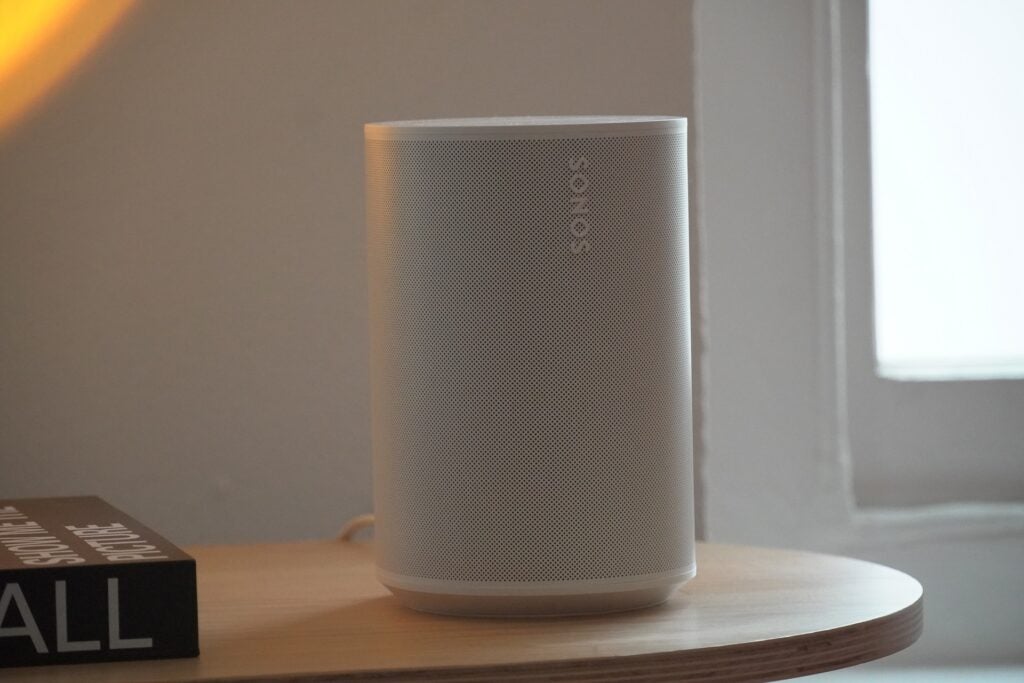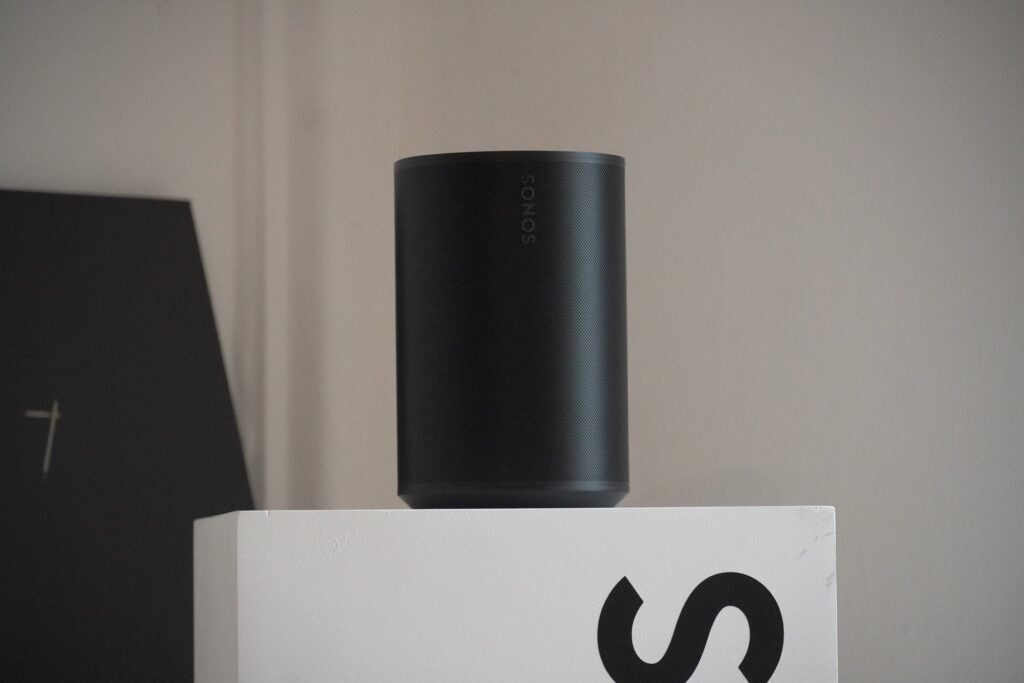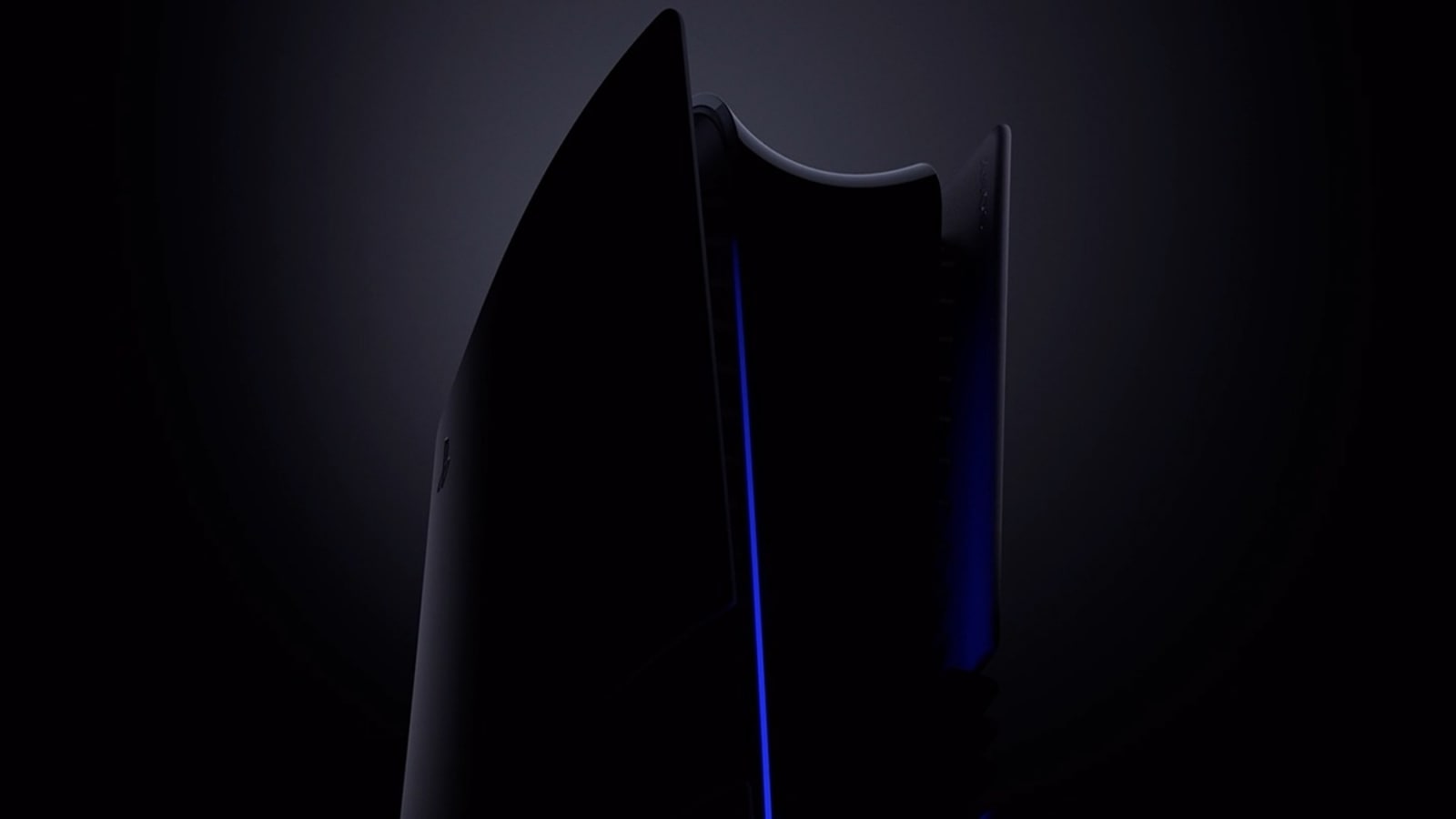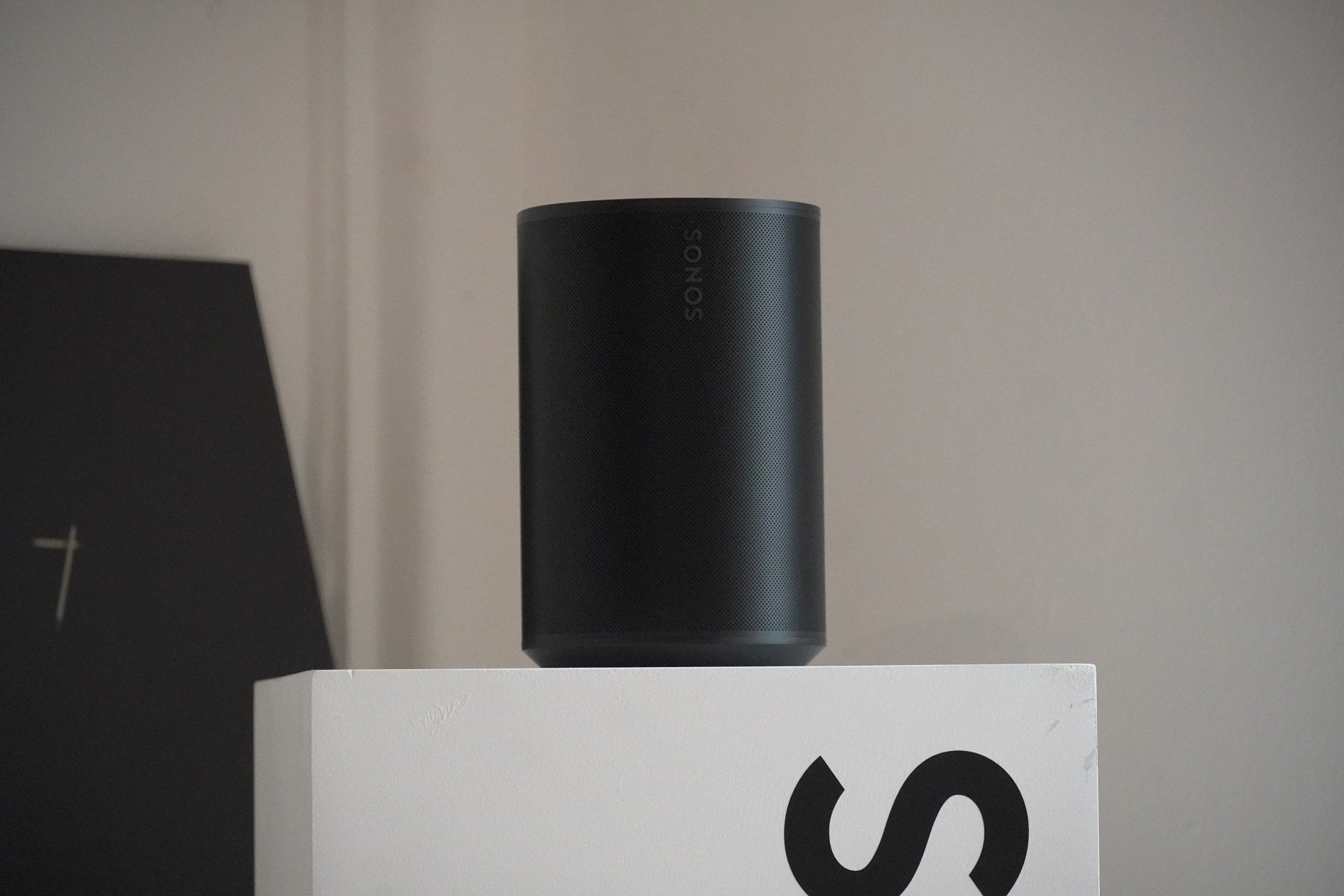The Sonos Era 100 looks to be a more accessible wireless speaker than the Sonos One, with its Bluetooth and enhanced Trueplay capabilities, and my first impressions indicate that it sounds better too
Pros
- Improved bass response
- Bigger sweet spot for listening
- Similar footprint as before
Cons
- More expensive than Sonos One
- Dedicated Ethernet port swapped for USB-C
Introduction
Sonos has announced two speakers in the Era 100 and Era 300, establishing a new series of speakers going forward that deliver the same unmistakable Sonos experience.
The Era 100 can be viewed as a replacement for the Sonos One, which will continue to be on sale, but once stock has been depleted the Era 100 will take over as the ‘cheapest’ Sonos home speaker.
I went to a preview of the Era 100 in Soho ahead of launch, and though my time with the speaker was brief, I was impressed by what I heard from the incoming wireless speaker.
Availability
- UKRRP: £249
- USARRP: $249
- EuropeRRP: €279
- CanadaTBC
The Sonos Era 100 goes on March 28th in the UK, and it’ll sell for $249 / £249 / €279 / AUD $399.
That’s more expensive than the current Sonos One is by about $50 / £50 / €50 / AUD$100 in each market. There’s no confirmation yet of an SL version that drops the microphones and built-in voice assistance, but if that model did exist, it would be cheaper based on previous SL models from Sonos.
Design
- Taller and wider than the One
- Similar footprint
- USB-C replaces Ethernet port
In a straight comparison, the Sonos Era 100 is a little taller (by 20mm), deeper but around the same width as the Sonos One. And the way the bottom of the speaker has been designed (a sort of curved bottom end) shouldn’t take up much more space than its predecessor.
The top surface, where the controls lie, has changed a little with its rounded shape that looks bigger, but still employs touch capacitive buttons for operation, though there’s a slider of sorts to manage volume in the middle. You can still turn off the microphones with a button on top if you don’t want them listening to you, or you can use the hardware solution and completely disconnect power from the microphones via a button on the speaker’s rear.
It still adheres to Sonos’ industrial design aesthetic that it has been going for these past several years, but the gentle curves of the Era 100 gives the speaker a slightly more pleasing presence in a room. As is the case with the rest of Sonos’ home speakers, the Era 100 comes in a choice of black or white finishes.

Around the back is perhaps the biggest change. There’s still the detachable cable for power, but the built-in Ethernet port is gone, replaced by a USB-C port. The port expands the range of products that can be connected, including a USB-C to Lightning cable for older iPhones, and Sonos is selling adapters for aux line in (Sonos Line-In Adapter) and Ethernet connections (Sonos Combo Adapter).
It’s probably a change that won’t go down well with some, given the preference to hardwire (especially for businesses) to avoid a shaky connection, compounded by having to pay for an accessory to enable it again.
Sonos has described the Era 100 as more sustainable, made with post-consumer recycled (PCR) plastic, packaged in 100% sustainably sourced paper (so you can put it into the recycling once unpacked), and it’s been engineered to reduce power consumption in its sleep mode, so it draws less power when not in use. It can also be serviced and repaired without having to send it back to Sonos, as long as you know what to do, by reducing adhesives and using screws to more easily disassemble the speaker.
Features
- New Trueplay variant in Quick Tune
- Bluetooth 5.0 support
- Can be used in stereo or home cinema set-up
The Sonos Era 100 will cover all the same features as virtually every other Sonos speaker that functions within the home environment. There is voice assistance in Amazon Alexa, Google Assistant and Sonos Voice Control (for managing music), as well as a link to the Sonos app whereby users can control various functions and access a wide array of music streaming apps such as Tidal, Deezer and Qobuz.
I’ll function more on what’s new, and that includes support for Bluetooth 5.0 to allow more devices to connect to the speaker, joining the likes of casting over Wi-Fi 6, Spotify Connect and AirPlay (for iOS devices).

Also new is a version of Trueplay called Quick Tune. Instead of having to wave an iPhone around a room to calibrate the speaker, the user can tap a button in the Sonos app and the Era 100’s built in speakers will measure the space around it and create a listening profile to match the room’s acoustics.
And as it no longer requires the use of an iPhone’s microphones to calibrate, the feature has been brought to the Sonos app on Android, allowing more people to optimise the speaker’s sound. You can still manually adjust bass, treble and loudness levels in the app.
And there is, of course, support for stereo sound when two Era 100 speakers are paired together in the app. And as was the case with the One Gen 2, you can wireless connect two Era 100s to a soundbar (i.e. the Beam Gen 2), to act as rear gunners to produce a bigger room-filling sound.
Sound Quality
- Neutral presentation
- Bigger, wider sweet spot
- Bass hits with more depth and punch
The big change is the driver setup. The Era 100 features three class-D digital amplifiers that power two tweeters and a woofer. That differs from the Sonos One’s tweeter and woofer configuration.
Sonos, as usual, is mum on the exact amount of power being funnelled to these speakers, but the main intent of these speakers is to produce a listening sweet spot that’s bigger than the Sonos One. And by all accounts Sonos appears to have succeeded on that front.

The two tweeters are angled out into the room, with a waveguide deployed to help shape the sound as it leaves the drivers to create the sensation of a bigger sound. In my brief time with the speaker, it did sound as if the presentation was much bigger and spacious than the Sonos One could produce, and while you could pinpoint the speaker as the source of the sound, it did spread music beyond its confines.
Even better was the sense of bass the Era 100 produced with Lizzo’s About Damn Time, which was much bigger, punchier and weightier than I’ve found the One can summon. It helps increase the dynamic range of the speaker and also makes the speaker a much more suitable choice for playing bass heavy tracks, as it is able to dig into them in more depth.
It still keeps Sonos’ neutrality to its presentation, I should add, so to my ears it didn’t sound as if the midrange clarity and detail or crispness of treble was sacrificed to produce the bigger, impactful bass response.
Latest deals
First impressions
My time with the Sonos Era 100 was brief but informative. In terms of the audio quality, it sounded a step up from the original One speaker, with a bigger sound, spacious soundstage and meatier bass handling that puts the Sonos Era 100 on similar footing to the Denon Home 150 speaker.
The design is elegant, and the speaker appears to be simple and intuitive to use, while the Sonos app adds a whole roster of new features, with Quick Tune set to be a popular addition in my opinion. The lack of a dedicated Ethernet port might upset some, but the addition of Bluetooth expands the speaker’s wireless capabilities. Sonos giveth and taketh away in that respect, but so far, the Era 100 looks to be a promising evolution of the Sonos’ wireless speaker range.
FAQs
No, the Sonos Era 100 does not support Dolby Atmos, so you’ll need to purchase the Era 300 instead to get such functionality.
The Sonos Era 100 looks to be a more accessible wireless speaker than the Sonos One, with its Bluetooth and enhanced Trueplay capabilities, and my first impressions indicate that it sounds better too
Pros
- Improved bass response
- Bigger sweet spot for listening
- Similar footprint as before
Cons
- More expensive than Sonos One
- Dedicated Ethernet port swapped for USB-C
Introduction
Sonos has announced two speakers in the Era 100 and Era 300, establishing a new series of speakers going forward that deliver the same unmistakable Sonos experience.
The Era 100 can be viewed as a replacement for the Sonos One, which will continue to be on sale, but once stock has been depleted the Era 100 will take over as the ‘cheapest’ Sonos home speaker.
I went to a preview of the Era 100 in Soho ahead of launch, and though my time with the speaker was brief, I was impressed by what I heard from the incoming wireless speaker.
Availability
- UKRRP: £249
- USARRP: $249
- EuropeRRP: €279
- CanadaTBC
The Sonos Era 100 goes on March 28th in the UK, and it’ll sell for $249 / £249 / €279 / AUD $399.
That’s more expensive than the current Sonos One is by about $50 / £50 / €50 / AUD$100 in each market. There’s no confirmation yet of an SL version that drops the microphones and built-in voice assistance, but if that model did exist, it would be cheaper based on previous SL models from Sonos.
Design
- Taller and wider than the One
- Similar footprint
- USB-C replaces Ethernet port
In a straight comparison, the Sonos Era 100 is a little taller (by 20mm), deeper but around the same width as the Sonos One. And the way the bottom of the speaker has been designed (a sort of curved bottom end) shouldn’t take up much more space than its predecessor.
The top surface, where the controls lie, has changed a little with its rounded shape that looks bigger, but still employs touch capacitive buttons for operation, though there’s a slider of sorts to manage volume in the middle. You can still turn off the microphones with a button on top if you don’t want them listening to you, or you can use the hardware solution and completely disconnect power from the microphones via a button on the speaker’s rear.
It still adheres to Sonos’ industrial design aesthetic that it has been going for these past several years, but the gentle curves of the Era 100 gives the speaker a slightly more pleasing presence in a room. As is the case with the rest of Sonos’ home speakers, the Era 100 comes in a choice of black or white finishes.

Around the back is perhaps the biggest change. There’s still the detachable cable for power, but the built-in Ethernet port is gone, replaced by a USB-C port. The port expands the range of products that can be connected, including a USB-C to Lightning cable for older iPhones, and Sonos is selling adapters for aux line in (Sonos Line-In Adapter) and Ethernet connections (Sonos Combo Adapter).
It’s probably a change that won’t go down well with some, given the preference to hardwire (especially for businesses) to avoid a shaky connection, compounded by having to pay for an accessory to enable it again.
Sonos has described the Era 100 as more sustainable, made with post-consumer recycled (PCR) plastic, packaged in 100% sustainably sourced paper (so you can put it into the recycling once unpacked), and it’s been engineered to reduce power consumption in its sleep mode, so it draws less power when not in use. It can also be serviced and repaired without having to send it back to Sonos, as long as you know what to do, by reducing adhesives and using screws to more easily disassemble the speaker.
Features
- New Trueplay variant in Quick Tune
- Bluetooth 5.0 support
- Can be used in stereo or home cinema set-up
The Sonos Era 100 will cover all the same features as virtually every other Sonos speaker that functions within the home environment. There is voice assistance in Amazon Alexa, Google Assistant and Sonos Voice Control (for managing music), as well as a link to the Sonos app whereby users can control various functions and access a wide array of music streaming apps such as Tidal, Deezer and Qobuz.
I’ll function more on what’s new, and that includes support for Bluetooth 5.0 to allow more devices to connect to the speaker, joining the likes of casting over Wi-Fi 6, Spotify Connect and AirPlay (for iOS devices).

Also new is a version of Trueplay called Quick Tune. Instead of having to wave an iPhone around a room to calibrate the speaker, the user can tap a button in the Sonos app and the Era 100’s built in speakers will measure the space around it and create a listening profile to match the room’s acoustics.
And as it no longer requires the use of an iPhone’s microphones to calibrate, the feature has been brought to the Sonos app on Android, allowing more people to optimise the speaker’s sound. You can still manually adjust bass, treble and loudness levels in the app.
And there is, of course, support for stereo sound when two Era 100 speakers are paired together in the app. And as was the case with the One Gen 2, you can wireless connect two Era 100s to a soundbar (i.e. the Beam Gen 2), to act as rear gunners to produce a bigger room-filling sound.
Sound Quality
- Neutral presentation
- Bigger, wider sweet spot
- Bass hits with more depth and punch
The big change is the driver setup. The Era 100 features three class-D digital amplifiers that power two tweeters and a woofer. That differs from the Sonos One’s tweeter and woofer configuration.
Sonos, as usual, is mum on the exact amount of power being funnelled to these speakers, but the main intent of these speakers is to produce a listening sweet spot that’s bigger than the Sonos One. And by all accounts Sonos appears to have succeeded on that front.

The two tweeters are angled out into the room, with a waveguide deployed to help shape the sound as it leaves the drivers to create the sensation of a bigger sound. In my brief time with the speaker, it did sound as if the presentation was much bigger and spacious than the Sonos One could produce, and while you could pinpoint the speaker as the source of the sound, it did spread music beyond its confines.
Even better was the sense of bass the Era 100 produced with Lizzo’s About Damn Time, which was much bigger, punchier and weightier than I’ve found the One can summon. It helps increase the dynamic range of the speaker and also makes the speaker a much more suitable choice for playing bass heavy tracks, as it is able to dig into them in more depth.
It still keeps Sonos’ neutrality to its presentation, I should add, so to my ears it didn’t sound as if the midrange clarity and detail or crispness of treble was sacrificed to produce the bigger, impactful bass response.
Latest deals
First impressions
My time with the Sonos Era 100 was brief but informative. In terms of the audio quality, it sounded a step up from the original One speaker, with a bigger sound, spacious soundstage and meatier bass handling that puts the Sonos Era 100 on similar footing to the Denon Home 150 speaker.
The design is elegant, and the speaker appears to be simple and intuitive to use, while the Sonos app adds a whole roster of new features, with Quick Tune set to be a popular addition in my opinion. The lack of a dedicated Ethernet port might upset some, but the addition of Bluetooth expands the speaker’s wireless capabilities. Sonos giveth and taketh away in that respect, but so far, the Era 100 looks to be a promising evolution of the Sonos’ wireless speaker range.
FAQs
No, the Sonos Era 100 does not support Dolby Atmos, so you’ll need to purchase the Era 300 instead to get such functionality.


























